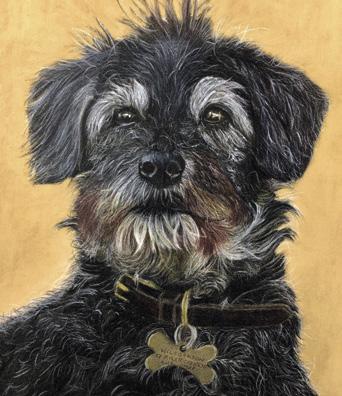
3 minute read
Enrichment and Extension
Fifth and Sixth Form Enrichment Programme As the public examination programme was cancelled during the COVID-19 pandemic, Fifth and Upper Sixth Formers due to sit examinations continued to work hard during the phases of supplementary evidence gathering. After the process had been completed, the Academic Team launched a new induction and enrichment programme to support the next phase of the pupils’ education.
The programme offered a variety of courses aimed at stimulating and academically engaging our students. In addition to bridging courses from GCSE to A Level for the Fifth Form, the Upper Sixth was involved in courses on virology, Plato’s Republic, post-Covid economics, sport psychology, civil rights in the USA, creative writing and engineering applications, to name but a few. Each Fifth Form pupil was enrolled in four courses and each Upper Sixth Form pupil was enrolled in two or three courses. All courses offered four 30-minute weekly sessions over a five-week period. All members of the group were enrolled in Microsoft Teams, where the sessions were taught ‘live’; teaching was also recorded to avoid clashes or time zone issues, allowing pupils to self-pace their studies if needed. The Sixth Form programme was also open to pupils from the neighbouring Steyning Grammar School (more on this on page 7).
Advertisement
In addition to the enrichment programme, both year groups continued to follow their scheduled tutorials, PSHE programme and year group meetings, as well as being encouraged to enrol in a Massive Open Online Course on their chosen topic. Fifth Formers also participated in specific sessions as part of their Transition to Sixth Form programme such as work experience, Extended Project Qualifications, CV writing, Degree Apprenticeships, overseas university opportunities, UCAS, careers in Medicine and many more. New Lower Sixth Form pupils joining the College in September 2020 were invited to take part, with many of them logging in remotely from various locations across the globe.
Amelia’s own Research on Wellbeing Alongside enrichment classes, I decided to carry out my own piece of psychology research. I chose to look at factors that allowed individuals to cope more or less well over the lockdown period, reflected in their scores for wellbeing and apathy measures. I designed a questionnaire measuring wellbeing, using the WHO-5, and apathy, using selected questions from the Apathy Evaluation Scale. I also collected data on a number of non-psychological concepts such as age, sex, average hours of sleep and physical activity.
I was able to get 100 responses to the survey from a variety of age groups by sharing and asking people to pass it on. Unsurprisingly, those who had easy access to an outdoor space reported doing more exercise each day than those without (a mean of 44 minutes vs a mean of 22.5 minutes respectively). There also appeared to be a relationship between having a high-risk family member and wellbeing – on average, this meant a lower wellbeing score. Statistical analysis also showed a significant relationship between hours of sleep and wellbeing (correlation coefficient of 0.44), with more sleep correlated to higher scores in wellbeing.
Overall, people had relatively low wellbeing scores (an average of 11.73 out of 25) whilst scoring relatively highly on the apathy evaluation scale (an average of 31.01 out of 40), meaning they are less apathetic. This suggests that whilst people’s mental wellbeing may have been suffering over lockdown, in general they are yet to feel a lack of interest and enthusiasm.
Amelia Davis, Upper Sixth
Creativity in Lockdown Creative practical work during lockdown could have proved particularly challenging for pupils in Design & Technology. The Third Form was set the task of exploring the designing and making of anything they wished using any material they had at home. Teaching focus was on the design process and modelling in paper and card, and pupils took this in a huge range of directions. Some looked at the art of origami, but other popular directions included cardboard games, costumes and props, pet obstacle courses and engineering mechanisms. The response was fantastic and impressive, a real testament to the creativity and engagement of Lancing pupils!
Tim Meierdirk, Head of DT













